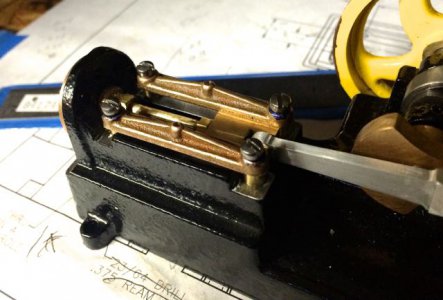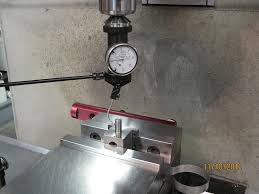Dear All,
A super accurate center is not required. It can probably be off a 64th or so and still look OK. The big deal is the distance between holes. Therefore I tried Ebel's technique first.
The difficulty with that technique is the fillet on the casting alters the distance the calipers move towards the center as I wiggle. But, with four passes I had an area of lines defining a center perhaps .05 across. Using my +2.75 reading glasses, I then lightly punched in the middle of that area. It seemed close, so I went ahead and drilled both ends. It actually turned out pretty well.
I think I will try the edge finding method on the next piece.
Dave, please explain better your pod process. What is a pod? I probably should know that. Please excuse my ignorance. I am assuming it is not an alien pod. Which is would be great, as I have no alien pods (Cocoons or Alien variety).
Thank you all, even if not mentioned by name, for your ideas and help.
Cheers,
Tom



